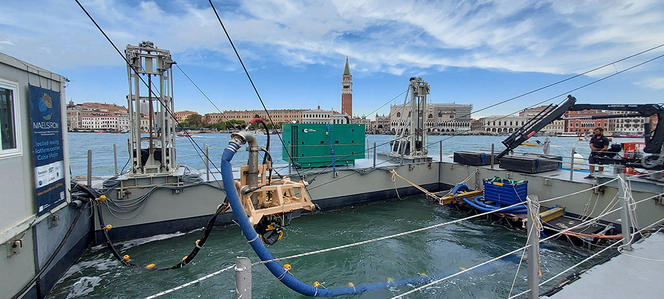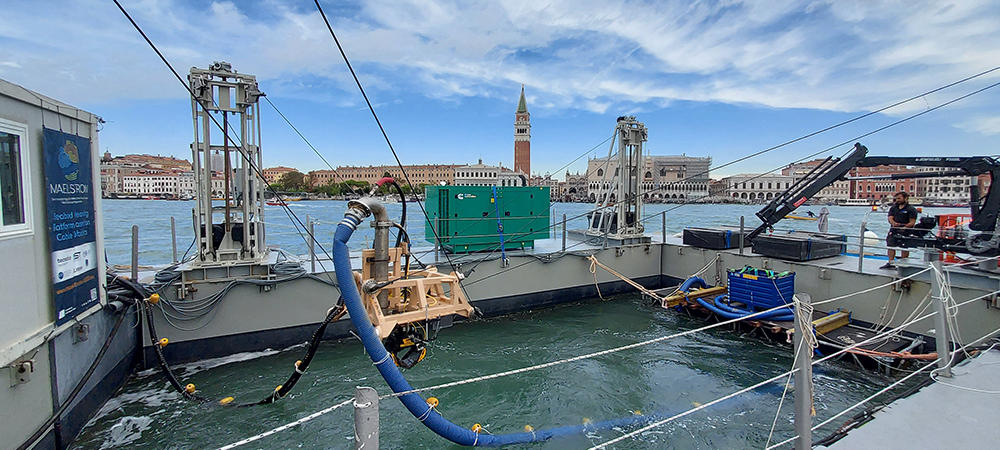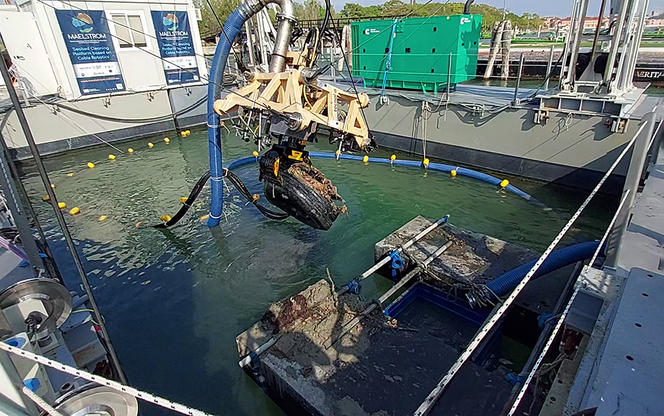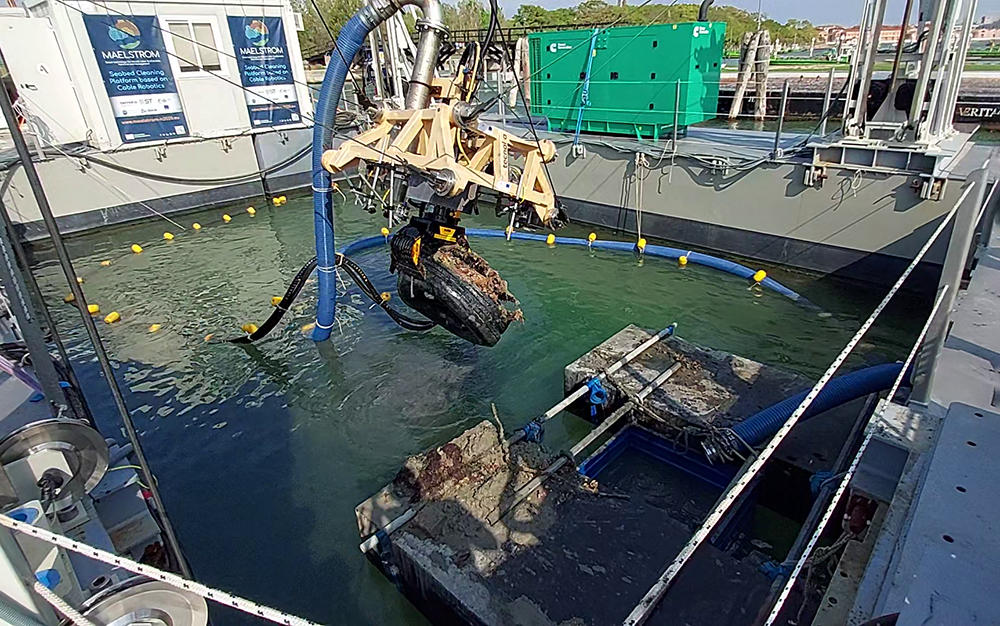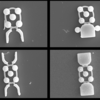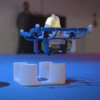You are here
An underwater robot to clean up coastal areas
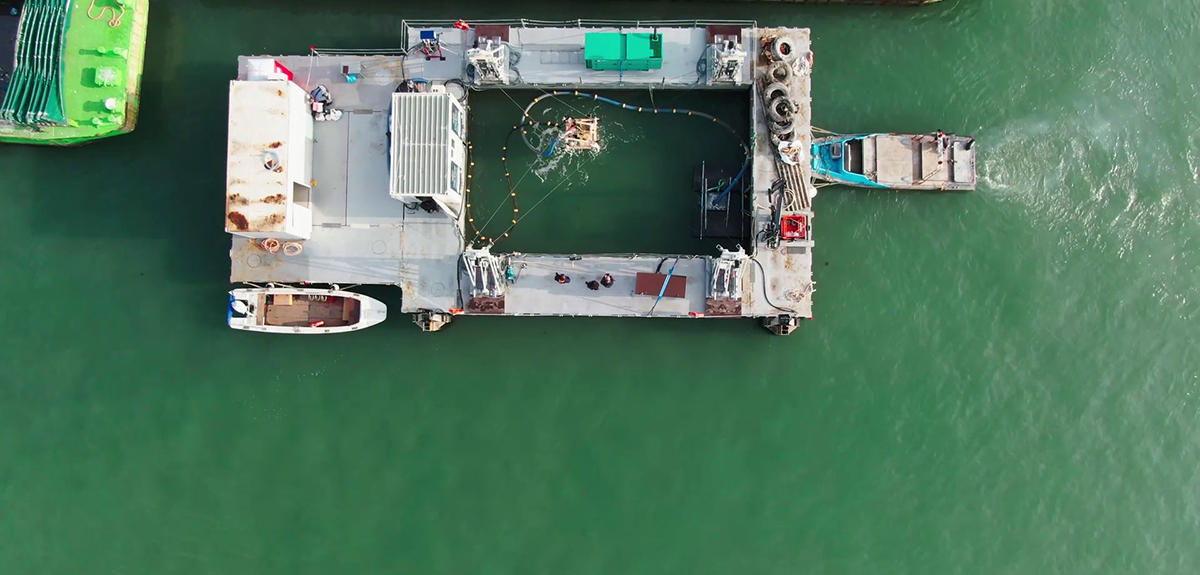
Despite its two-tonne weight, the mobile component of a floating robotic platform designed to clean up the seabed can dive in search of marine litter, which it then brings back to the surface. The platform is one of the facilities developed by the European MaelstromSmart technology for MArinE Litter SusTainable RemOval and Management. 1 project that brings together fourteen partners from eight countries. The whole system takes the form of a floating barge with a rectangular moonpool into which the robot can dive. A preliminary acoustic survey identifies high concentrations of debris and indicates the area to be cleaned up.
According to estimates by the Maelstrom team, the oceans are currently polluted by some 83 million tonnes of plastic waste. To help clear them, the platform has been specifically designed to function in coastal environments. The robot can descend to a depth of 15 to 20 metres and operate over an area of 70 square metres without any need to move the rest of the barge.
Eight cables for a manoeuvrable, reliable robot
The underwater device is guided by a system of eight cables wound onto winches. By winding and unwinding each cable, it can be moved with remarkable ease and precision. This enables it to handle heavier loads than if it were propelled like a conventional underwater machine, and ensures its stability in the presence of currents. The precision of this system also overcomes a major difficulty caused by the fact that GPS doesn't work in water, and thus cannot indicate the position and orientation of a marine robot.
“To the best of our knowledge, this is an unprecedented combination of a cable robot and a remotely operated underwater vehicle, two of our lab's top specialities,” explains Marc Gouttefarde, CNRS research professor at the Laboratory of Computer Science, Robotics and Microelectronics of Montpellier (LIRMM).2 “We developed the robot's controls and sensors, with a system of cameras and an acoustic sensor that measures the distance between the mobile part of the platform and the seabed. An inertial navigation unit is also used to monitor the orientation of the device once it is underwater. The rest of the engineering was carried out by the Tecnalia research foundation.”
Initial trials hindered by turbid water
The platform was tested for two weeks in September in the Venetian Lagoon under the coordination of the Italian laboratory CNR-ISMAR.3 The robot was equipped with a suction head as well as a grapple to collect waste such as plastic, tyres and fishing nets. “We encountered difficulties during this experimental phase, because, despite the fine weather, underwater visibility was practically nil,” says Gouttefarde. “We couldn't identify the debris until we got within a few centimetres of it.”
To get around this problem, the LIRMM plans to use the machine off the coast of Montpellier (southern France), where the clarity of the water should make it possible to establish a robust database of photographs and videos of marine litter. “We have already done similar work on the identification of fish,” the researcher explains. The database will then be used to train artificial intelligence so that it can select the debris to be removed by the robot. The researchers are also working on automatic waste recovery, in other words, the possibility for human operators to click on the litter they see on a video so that the system can recover it.
Other avenues for improvement are also being pursued. “Cable robot systems are easy to scale up in order to cover a larger area, but it’s expensive,” Gouttefarde points out. “At the moment, the barge is towed by a boat, but another idea we're looking at is to have a motorised version equipped with a surface GPS so that it can be sent to clean up specific locations.”
The barge was designed with the help of Servizi Tecnici, a Venice-based company specialising in the construction of floating platforms for events such as firework displays and concerts. The Maelstrom team is considering dismantling the system and testing it under different conditions, although the new locations have yet to be determined. In addition, another component of the project is a bubble barrier that has been tested in the Ave River in Portugal. This catches litter before it can reach the ocean and directs it towards the river banks, where it can be more easily collected, with no impact on aquatic organisms.
While awaiting new experiments in the field, the LIRMM researchers are continuing to work on the artificial intelligence dimension of the project, since automatic detection and removal of litter would accelerate the clean-up of coastal areas.
Explore more
Author
A graduate from the School of Journalism in Lille, Martin Koppe has worked for a number of publications including Dossiers d’archéologie, Science et Vie Junior and La Recherche, as well the website Maxisciences.com. He also holds degrees in art history, archaeometry, and epistemology.


